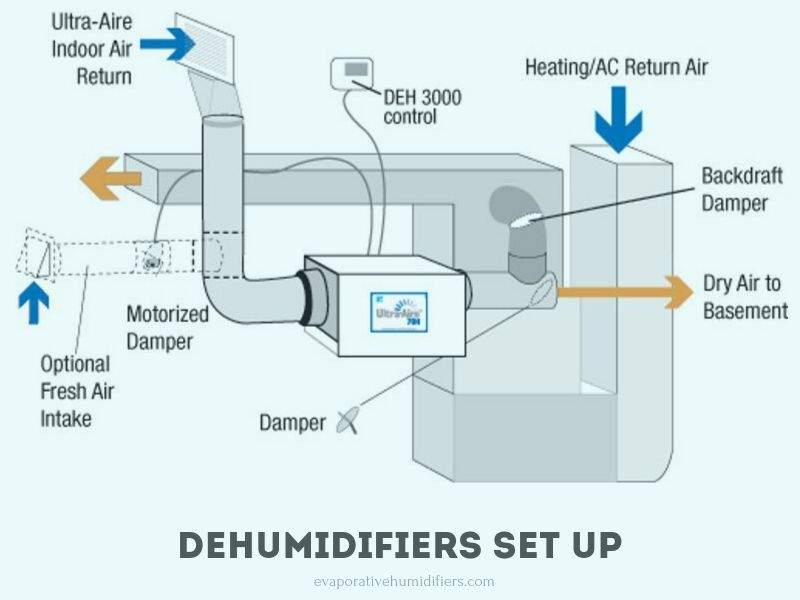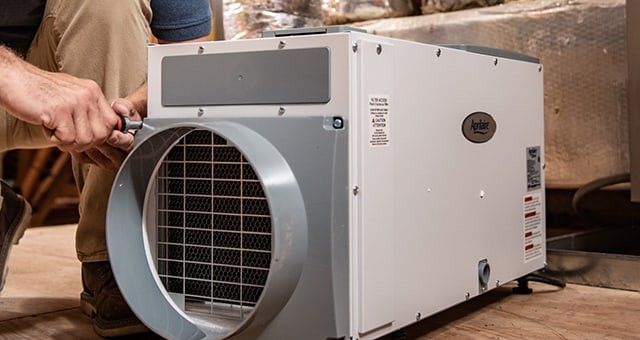The Power Of Moisture Control: A Comprehensive Guide To Whole-Home Dehumidifiers
The Power of Moisture Control: A Comprehensive Guide to Whole-Home Dehumidifiers
Related Articles: The Power of Moisture Control: A Comprehensive Guide to Whole-Home Dehumidifiers
Introduction
With enthusiasm, let’s navigate through the intriguing topic related to The Power of Moisture Control: A Comprehensive Guide to Whole-Home Dehumidifiers. Let’s weave interesting information and offer fresh perspectives to the readers.
Table of Content
The Power of Moisture Control: A Comprehensive Guide to Whole-Home Dehumidifiers

Excess moisture within a home can be more than just a nuisance; it can significantly impact the well-being of its inhabitants and the structural integrity of the building itself. While localized dehumidifiers can address specific areas, a whole-home dehumidifier offers a comprehensive solution, tackling moisture issues at the source and creating a healthier, more comfortable living environment.
Understanding the Importance of Moisture Control
Humidity, the amount of moisture in the air, plays a crucial role in indoor comfort and health. When humidity levels rise above 50%, the air feels heavy and oppressive, making it difficult to regulate body temperature. This can lead to discomfort, fatigue, and even respiratory issues, particularly for those with allergies or asthma.
Furthermore, high humidity can contribute to the growth of mold and mildew, which pose serious health risks and can damage building materials. Mold spores can trigger allergies and respiratory problems, while mildew can cause discoloration and structural deterioration, leading to costly repairs.
Whole-Home Dehumidifiers: A Comprehensive Solution
A whole-home dehumidifier, unlike its portable counterpart, tackles moisture problems at the source by removing excess moisture from the entire house. This is achieved through a central system that typically integrates with the HVAC system, efficiently removing moisture from the air circulating throughout the house.
Benefits of Whole-Home Dehumidification
The benefits of installing a whole-home dehumidifier extend beyond simply reducing humidity. They encompass a range of advantages that contribute to a healthier, more comfortable, and cost-effective living environment:
- Improved Indoor Air Quality: By removing excess moisture, a whole-home dehumidifier inhibits the growth of mold, mildew, and dust mites, improving indoor air quality and reducing the risk of respiratory problems.
- Enhanced Comfort and Well-being: Reduced humidity translates to a more comfortable indoor environment, allowing for better temperature regulation and reducing the feeling of stickiness or oppressiveness.
- Protection Against Structural Damage: By controlling moisture levels, a whole-home dehumidifier prevents the growth of mold and mildew, which can damage building materials, leading to costly repairs and maintenance.
- Reduced Energy Costs: A dehumidifier can contribute to energy savings by reducing the load on the HVAC system, as it removes excess moisture, allowing the system to operate more efficiently.
- Protection of Valuables: High humidity can damage wood furniture, artwork, and other valuable possessions. A whole-home dehumidifier helps preserve these items by maintaining a consistent and optimal moisture level.
Types of Whole-Home Dehumidifiers
There are two primary types of whole-home dehumidifiers:
- Central Dehumidifiers: These systems are integrated with the HVAC system, typically installed in the ductwork. They operate in conjunction with the air conditioner, removing moisture from the air as it circulates through the house.
- Standalone Dehumidifiers: These systems are independent of the HVAC system and often feature a dedicated ventilation system. They can be installed in a basement or crawl space, removing moisture from the air and venting it outside.
Choosing the Right Whole-Home Dehumidifier
Selecting the appropriate whole-home dehumidifier requires careful consideration of several factors:
- Home Size: The size of the dehumidifier should match the size of the home to ensure effective moisture removal.
- Humidity Levels: The dehumidifier’s capacity should be adequate to handle the existing humidity levels in the home.
- Budget: Whole-home dehumidifiers vary in price, and it’s important to choose one that fits within your budget.
- Installation: Consider the complexity of the installation process and whether it requires professional assistance.
FAQs about Whole-Home Dehumidifiers
Q: How much does a whole-home dehumidifier cost?
A: The cost of a whole-home dehumidifier varies depending on the size, features, and type of system. Prices can range from a few hundred dollars for a basic standalone unit to several thousand dollars for a high-end central system.
Q: How much energy does a whole-home dehumidifier use?
A: The energy consumption of a whole-home dehumidifier depends on its size, efficiency, and the humidity levels in the home. However, most modern units are energy-efficient and can save money on energy costs by reducing the load on the HVAC system.
Q: How often should I clean a whole-home dehumidifier?
A: Regular cleaning is essential for optimal performance and longevity. The frequency of cleaning depends on the usage and environmental conditions, but it’s generally recommended to clean the unit every few months.
Q: What are the potential downsides of using a whole-home dehumidifier?
A: While whole-home dehumidifiers offer numerous benefits, they can also have some drawbacks:
- Installation Costs: Installing a central dehumidifier can be more expensive than installing a standalone unit.
- Potential for Dryness: Over-dehumidification can lead to dry air, which can irritate the skin and respiratory system.
- Maintenance: Like any mechanical system, a whole-home dehumidifier requires regular maintenance to ensure optimal performance.
Tips for Using a Whole-Home Dehumidifier
- Proper Sizing: Ensure the dehumidifier is sized appropriately for your home to effectively remove moisture.
- Regular Maintenance: Clean the unit regularly to prevent dust and debris buildup, which can affect its performance.
- Monitor Humidity Levels: Use a hygrometer to monitor the humidity levels in your home and adjust the dehumidifier settings as needed.
- Ventilation: Ensure adequate ventilation in your home to prevent the buildup of moisture and ensure proper air circulation.
Conclusion
A whole-home dehumidifier is a valuable investment for homeowners seeking to create a healthier, more comfortable, and energy-efficient living environment. By effectively controlling moisture levels, these systems combat the negative effects of humidity, preventing mold growth, improving indoor air quality, and protecting valuable possessions. While some initial investment and maintenance are required, the long-term benefits of a whole-home dehumidifier far outweigh the costs, contributing to a better quality of life for all household members.





/184856939-copy-56a343f15f9b58b7d0d12c9f.jpg)


Closure
Thus, we hope this article has provided valuable insights into The Power of Moisture Control: A Comprehensive Guide to Whole-Home Dehumidifiers. We thank you for taking the time to read this article. See you in our next article!
You may also like
Recent Posts
- Shaping The Homes Of Tomorrow: Home Decor Trends For 2025
- Navigating The Evolving Landscape Of Home Decor Trends: A Comprehensive Guide
- Weaving History And Home: A Guide To Unique Vintage Farmhouse Decor
- The Enduring Appeal Of Wooden Duck Home Decor: A Timeless Symbol Of Nature And Serenity
- Beyond The Ordinary: A Guide To Unique Home Decor Accessories
- Navigating The Fast Fashion Landscape: Exploring Alternatives To SHEIN
- A Global Network Of Home Improvement: The Reach Of The Home Depot
- Finding The Perfect Pieces: A Guide To Home Decor Shopping
Leave a Reply